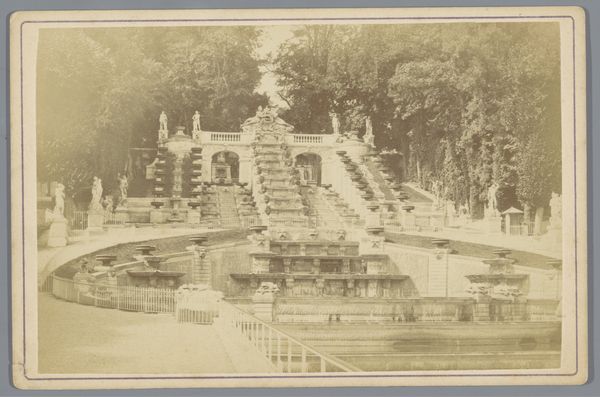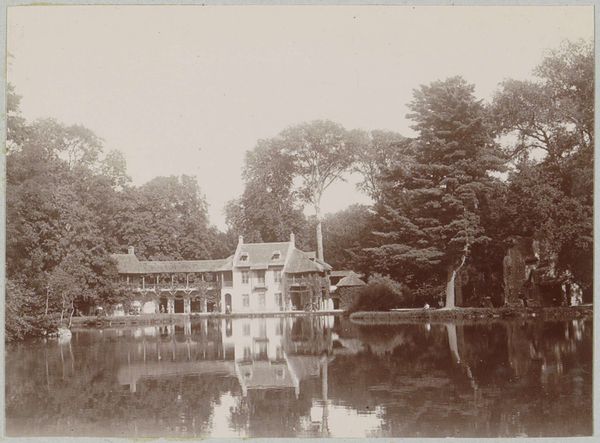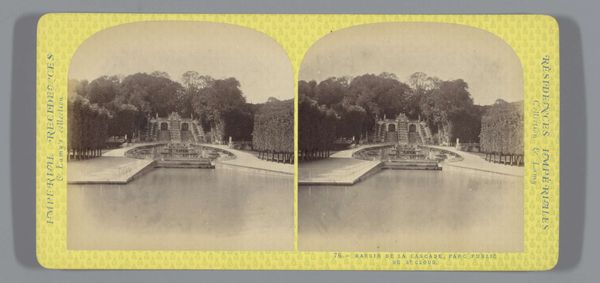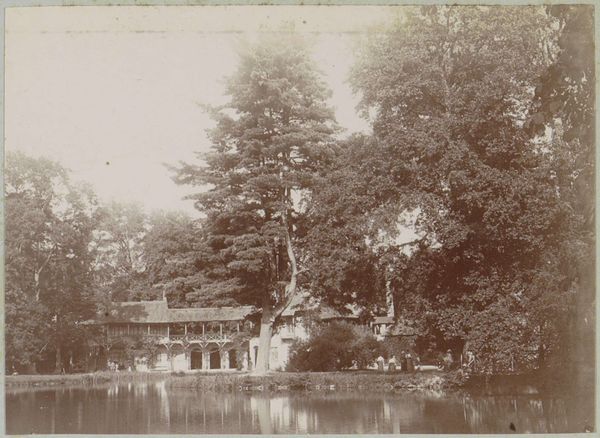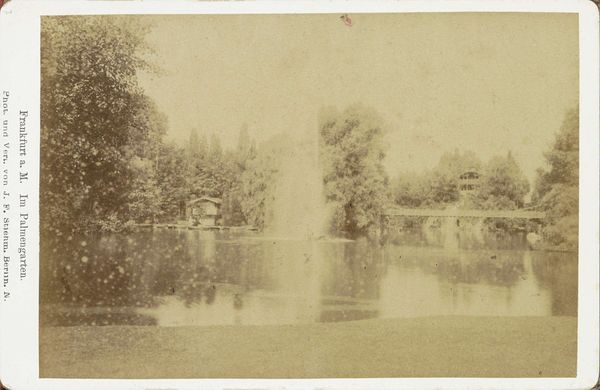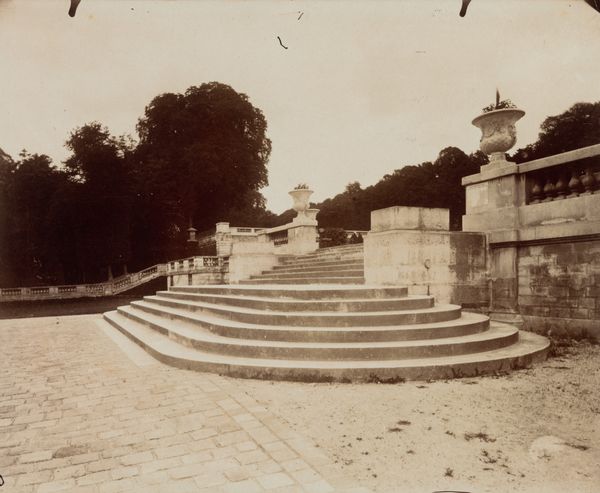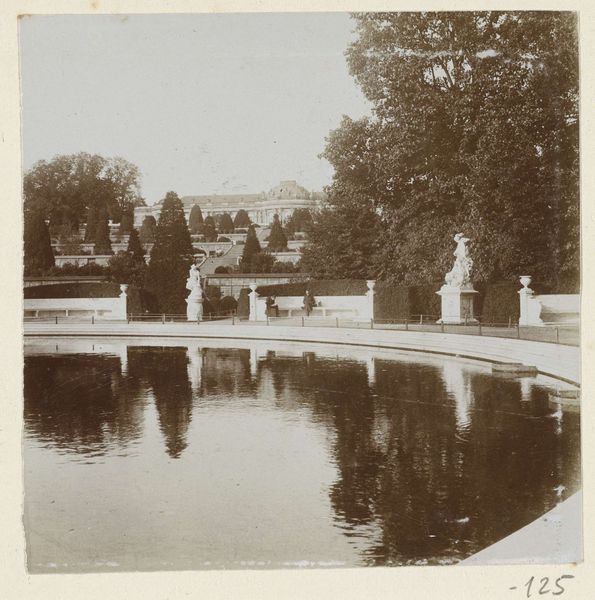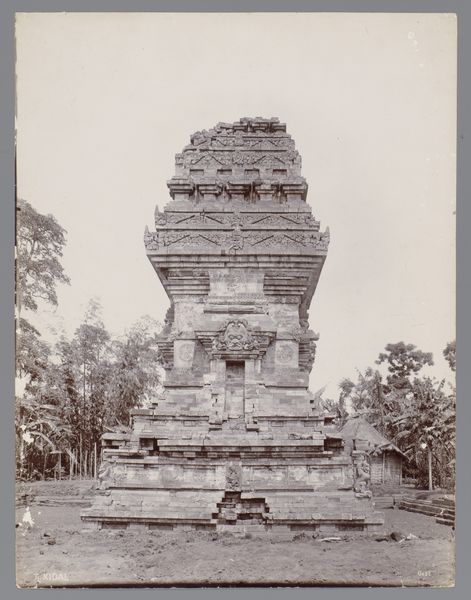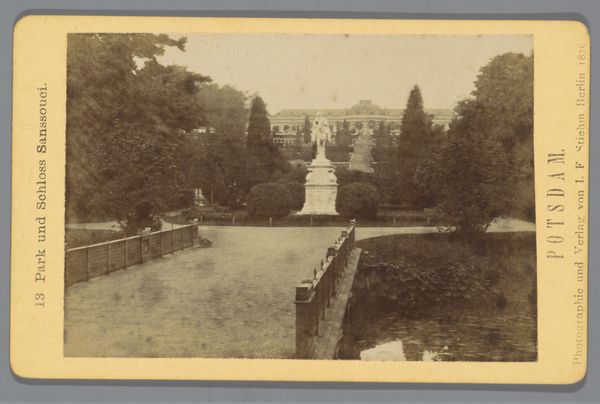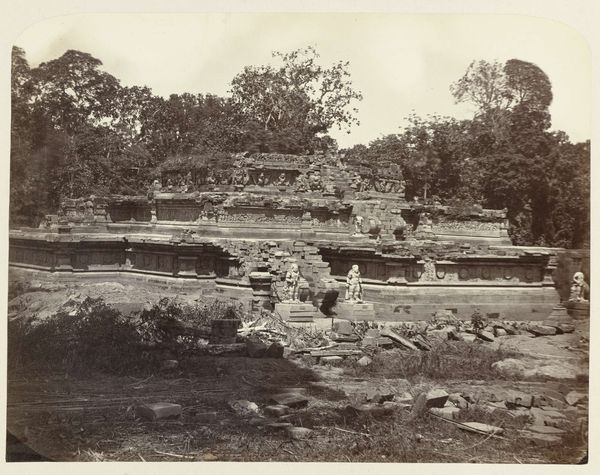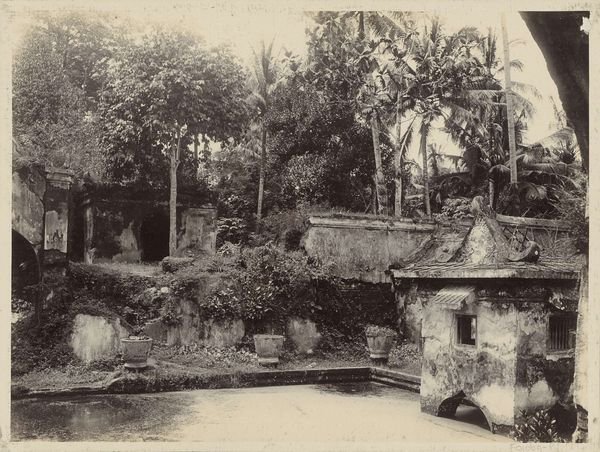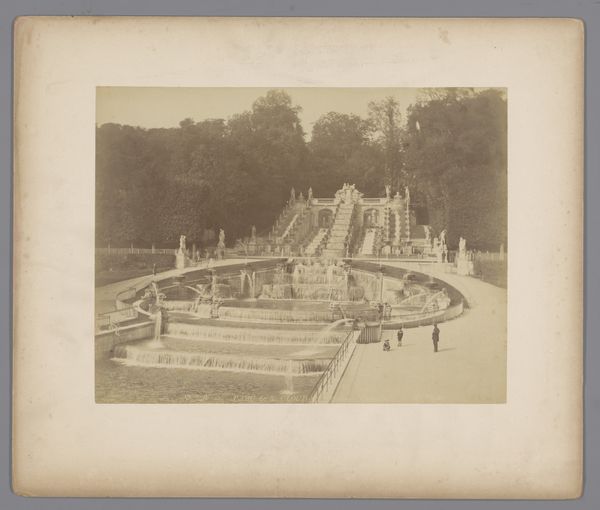
Dimensions: height 194 mm, width 251 mm, height 308 mm, width 432 mm
Copyright: Rijks Museum: Open Domain
Curator: Looking at Achille Quinet's photograph, taken sometime between 1865 and 1880, we're presented with a tranquil vista, "Watervallen in de tuin van het kasteel van Saint-Cloud," or "Waterfalls in the garden of the castle of Saint-Cloud" as we'd say today. Editor: My first thought is how ghostly it feels. The tonal range is limited and dreamy. There's a structured elegance to the tiered fountains but that's somehow fighting with the unkempt foliage pressing in. I immediately think of what it might sound like. Curator: An intriguing interpretation. To delve a bit deeper, the image uses the photographic medium, yes, but aligns itself formally and thematically to the tradition of Neoclassicism. The crisp geometry of the fountains, set against the softer backdrop, speaks to an idealized version of nature under control. Editor: I'm interested in that 'control.' Because, looking closely, the construction seems immense, laborious. All that stone! Who quarried it? What were their lives like? The image presents high art, high society even, but where is the labour that literally built this leisure? It makes you think about consumption as well: what does it take to create such a tranquil and expensive experience? Curator: The image certainly invites scrutiny of class divides. The contrast of opulent construction with the wilder surrounding flora sets a tone, perhaps even of an era in its twilight. The scene seems almost expectant or frozen in time. I am intrigued by the symmetry, like you say. There is certainly tension between nature's growth and humankind’s imposition of order upon it. Editor: I’m struck that in using the reproducible medium of photography to show us this moment in time, Quinet reveals the fleeting nature of what would otherwise seem eternal: class power. Photography lets this moment of human effort, social strata and resource use stay present beyond its immediate presence in time. I am very aware that the location no longer exists, but this memory still persists to the viewer, making us examine the social construct it presented and came from. Curator: I appreciate that shift to thinking about memory. It all becomes quite poignant then; these meticulously crafted gardens, forever frozen as light on a photographic plate, now evoke something akin to the transient nature of empire, as you point out. A moment captured for our reflective pondering today. Editor: A constructed paradise with many ghostly whispers from its social formation. I will continue thinking about how labor helped compose what we see here.
Comments
No comments
Be the first to comment and join the conversation on the ultimate creative platform.
